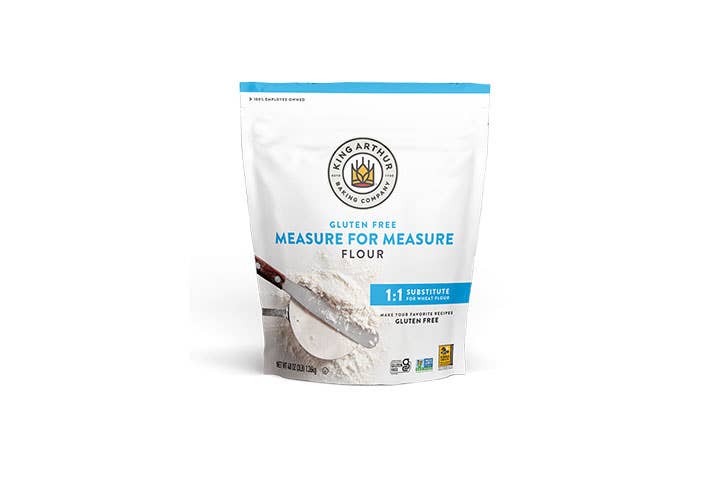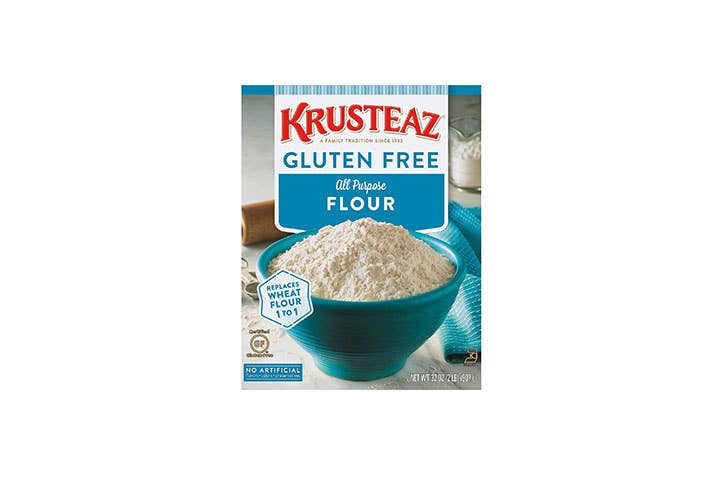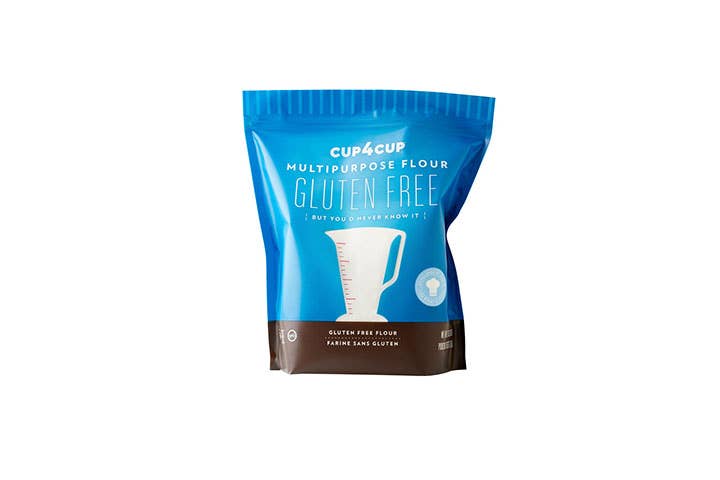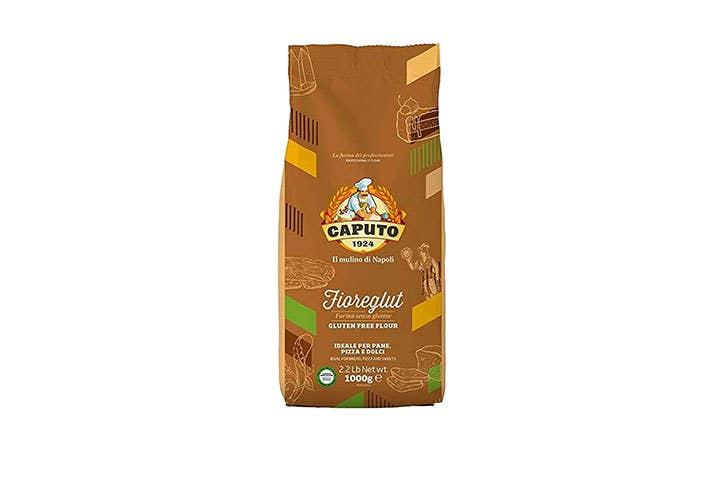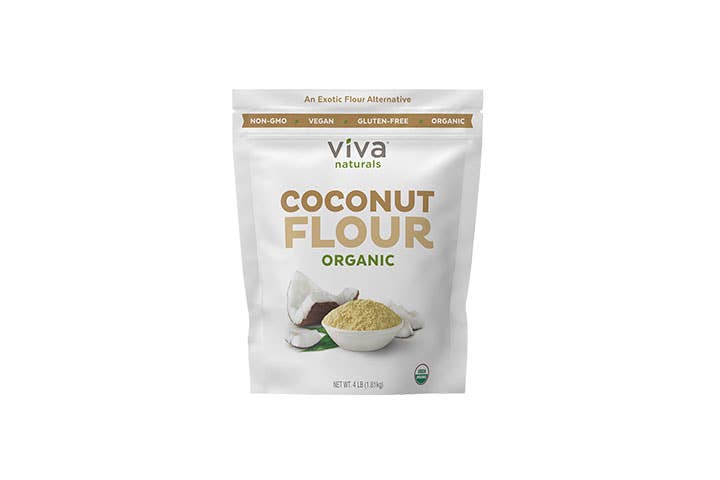The Best Gluten-Free Flours for Baking in 2022
Choosing the right gluten-free flour for your recipe is the key to success, no matter what you’re baking.
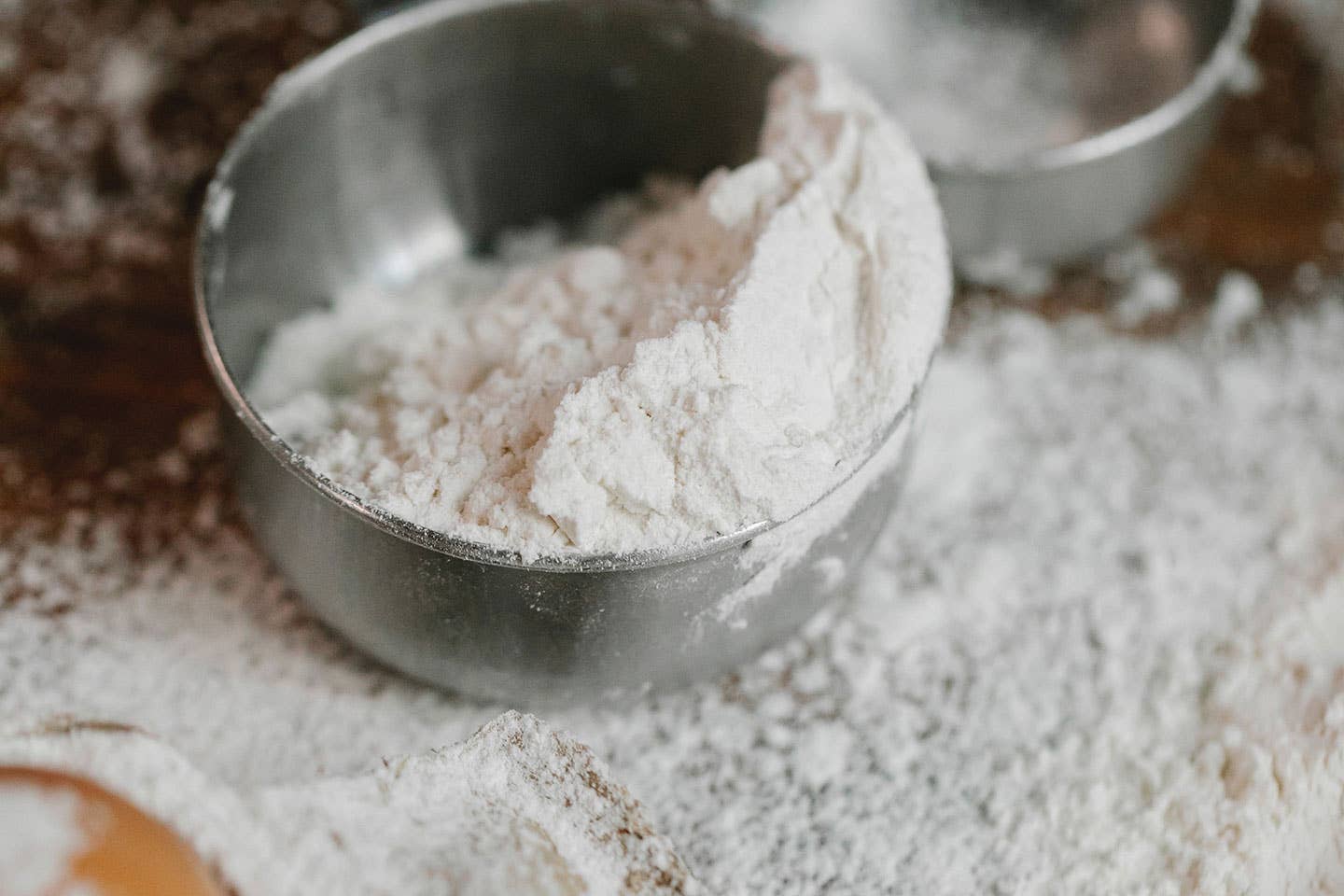
Homemade fluffy cakes, flaky biscuits, tender muffins, and even chewy pizza dough were once just memories for those who had gone gluten-free. But, with the array of gluten-free flours now accessible at supermarkets across the country, and many recipes tailored to baking with them, those treats are within reach again—with a bit of research.
First, the good news: Owing to increased demand from those with gluten intolerance or Celiac disease, the availability of gluten-free flours and products has skyrocketed. According to Spoonshot, which analyzes millions of data points to track the growth of such trends, consumer interest in gluten-free flours and products has nearly quadrupled over the last decade.
The challenge is that not all gluten-free flours perform the same way. Gluten’s principal function is to give dough elasticity, provide a chewy texture and help baked goods maintain their shape. Mimicking the taste and texture of traditional grain-based baked goods often means using a blend of gluten-free flours to get the same effect. Luckily, some companies have made that convenient by introducing gluten-free flour blends designed to replace traditional all-purpose flour at a one-to-one ratio. So, with all of the gluten-free flour options available to bakers, how do you choose?
We turned to experts, like Jessica Scarola, owner of Elegant Elephant Baking in Eugene, Oregon, to weigh in on the best gluten-free flours. “Honestly, I have tried every mix on the market,” she says. And while she doesn’t believe there will ever be a singular multipurpose blend for all gluten-free baking, she recommends seeking out your favorite blend for cakes, breads, and so on. But, it’s not always an easy search. “In gluten-free baking the ratio of starch to grain to binder matters to the gram,” says Scarola. “And within the gluten-free community, there are so many additional allergies or restrictions people face.”
Chris Stafferton, aka @breadarchitect, is the author of Promise & Fulfillment: Formulas for Real Bread without Gluten. He takes an interesting approach to gluten-free baking: “I consider the bread I want to make, then design the flour mix to make that bread. Sometimes it’s a single flour, sometimes it may be two or three flours.”
Whether you choose to utilize a straight-forward gluten-free blend, doctor up a mix, or create your own, consider what you plan to bake, other dietary restrictions, and budget. We spoke with experts in the field of gluten-free baking and took some products out for a test drive in order to arrive at our best gluten-free flour picks. Here’s a good place to start:
Our Top Picks
- Best Overall: Gluten-Free Measure for Measure Flour - King Arthur Baking Company
- Best Value: Krusteaz Gluten-Free Flour
- Best Multi-Purpose Flour: Cup4Cup Gluten-Free Flour, Multipurpose Flour
- Best For Pizza, Breads, and Pasta: Antimo Caputo Gluten-Free Pizza Flour
- Best For Cookies, Cakes, and Quick Breads: Bob’s Red Mill Gluten-Free 1-to-1 Baking Flour
- Best Lifespan: Viva Naturals Organic Coconut Flour
Best Overall
Weight: 1 lb. | Ingredients: Rice flour, whole grain brown rice flour, whole sorghum flour, tapioca starch, potato starch, cellulose, xanthan gum, vitamin and mineral blend | Good for: Cookies, cakes, brownies, muffins, quick breads, pancakes
Pros
- Easy 1-for-1 swap
- Typical bakes have good texture and rise
- Available in two sizes
Cons
- Slight taste of brown rice
- Not suitable for yeasted doughs
Why we chose it: A simple swap of all-purpose flour for this blend will have you whipping up muffins, cookies, cakes, brownies, pancakes, and other gluten-free desserts with ease. And the results are very tasty.
This is an excellent flour blend that takes some of the guesswork out of gluten-free baking while providing flavor that comes very close to mimicking traditional flour. Testers who baked cookies, quick breads, and cakes gave high marks for taste without gumminess. Also (thankfully) missing was that disappointing aftertaste often found in gluten-free blends. If you are testing the waters of gluten-free baking or simply need to bake a birthday cake for a gluten-sensitive pal, this eliminates much of the guesswork. Available in both 1-pound and 3-pound bags, casual as well as serious gluten-free bakers can choose accordingly.
Best Value: Krusteaz Gluten-Free Flour
Best Value
Weight:. 32 oz. | Ingredients: Whole grain sorghum flour, brown rice flour (rice flour, stabilized rice bran with germ), whole grain millet flour, rice flour | Contains 2% or less of the following: food starch-modified, whole grain quinoa flour, xanthan gum | Good for: Pancakes, cookies, brownies, muffins
Pros
- Budget friendly
- Good for those with tapioca allergy
- Available in bulk - store extra bags in the freezer
Cons
- Measure carefully to prevent dense bakes
- Slight taste from brown rice flour
- Slight learning curve with baking time
Why we chose it: There’s more to this blend than a comfortable price point. A versatile blend designed to be used as a 1:1 swap for all-purpose flour in your favorite recipes, this is a fine product to experiment with as you hone your gluten-free baking skills.
At just 13 cents per ounce, this versatile blend of whole-grain sorghum flour, brown rice flour, whole-grain millet flour, and xanthan gum is designed to replace wheat-based flour in equal parts. Testers appreciated this blend as an affordable option when turning out cookies, brownies, muffins, and pancakes; results were good with a few caveats. Brown rice flour does lend a distinctive flavor that some bakers may not like for delicate cakes and cookies. It is important to measure carefully (weighing your ingredients is best) to avoid dense batters. Well-mixed batters that are given some resting time fare better, allowing the flours and starches an opportunity to absorb the liquid ingredients and soften. This extra step yielded pancakes, cookies, brownies, and muffins with more rise. Baking time varies depending upon the recipe; some items need more beyond a “clean test.”
Best Multi-Purpose: Cup4Cup Gluten-Free Flour, Multipurpose Flour
Best Multi-Purpose Flour
Weight: 3 lbs. | Ingredients: Cornstarch, white rice flour, milk powder, tapioca flour, potato starch, xanthan gum | Good for: Biscuits, muffins, cookies, sauces, cream puffs
Pros
- Neutral flavor closely replicates all-purpose flour
- 1-to-1 substitution for all-purpose and wheat flour
- Excellent recipes on Cup-4-Cup website
Cons
- Contains milk and corn
- Expensive
Why we chose it: Avid gluten-free bakers rave about Cup-4-Cup’s Multipurpose Flour blend, which combinaes cornstarch, rice flours (brown and white), milk powder, tapioca flour, potato starch, and xanthan gum.
The blend is great for classic desserts like cream puffs and eclairs, muffins, cookies, and even thickening sauces, but testers applaud the way this flour truly shines in biscuit recipes. Created at Thomas Keller’s French Laundry restaurant, the good news about this blend is that baked goods brown just as beautifully as regular flour. (Though for dairy-sensitive folks that’s bad news, because the ingredient that encourages the browning is milk powder.)
Best For Pizza, Breads, and Pasta: Antimo Caputo Gluten-Free Pizza Flour
Weight: 2 lbs. 2 oz. | Ingredients: Gluten-free wheat starch, dextrose, maize starch, buckwheat flour, rice starch, psyllium seed fiber, thickener: guar, flavoring | Good for: Pizza, breads, pasta
Pros
- Free from top allergens
- Chewy texture and high marks for taste
- Restaurant worthy
Cons
- Sandy texture
- Contains wheat starch making it unsuitable for those with a wheat allergy
Why we chose it: Although this blend is not suitable for all, finding a gluten-free pizza dough that stretches and holds together is rare. Add to the mix great taste and your gluten-free pizza-making days will be dramatically changed for the better.
This gluten-free pizza flour is made by a company known for its authentic Italian flour brands, but it is not suitable for everyone who follows a gluten-free diet. The one serious drawback to this flour is that it contains wheat starch, making it unsuitable for anyone with a wheat sensitivity. Having said that, for individuals who can consume wheat starch, this is an excellent choice. Popular in many restaurant kitchens, the flour does come with a high price tag, but dedicated fans rave about the texture and flavor.
Best Lifespan: Viva Naturals Organic Coconut Flour
Best Lifespan
Weight: 4 lbs. | Ingredients: Organic coconut flour| Good for: Cakes, muffins, pancakes
Pros
- Excellent for baked goods, particularly those with a pronounced coconut flavor
- Though low in sugar, has a natural sweet flavor
- Gluten-free and hypoallergenic
Cons
- Expensive and not shelf stable
- Distinct taste may be unsuitable for certain bakes
- Tricky to bake with -- best to use with proven recipes from reputable sources
Why we chose it: Not just for coconut-centric bakes, keep this one in the fridge for up to one year and enjoy cookies, brownies, breads, tortillas, and pancakes. A 90-day money-back guarantee sweetens the purchase.
The only ingredient in this flour is certified organic coconuts. Its light, natural sweetness enhances baked goods without overpowering them. Testers appreciated the texture of the finely-sifted flour, and while the distinctive taste of coconut is noticeable, for sweet baked goods this is a natural pairing. In baked goods, there is a learning curve; using less coconut flour than you would regular grain flour. Coconut flour tends to be “thirsty,” meaning recipes may require an additional egg and/or additional liquid in order to bind. One major complaint amongst users is the packaging: the ziplock bag seal does not seal easily. If not using the flour regularly, best to divide the 4-pound bag into single-pound bags and place extras in the freezer.
How We Chose These Products
In addition to seeking the knowledge of experts in the gluten-free flour field, we also spoke with gluten-free bakers (home and professionals) to get their input. When applicable, flours were tested with suitable recipes; our testers baked gluten-free chocolate chip cookies, gluten-free banana muffins, gluten-free biscuits, and gluten-free pizza dough. Additionally, we reached out to customer service reps at King Arthur Flour, Bob’s Red Mill, and Cup-4-Cup for their expertise and clarification.
Features to Keep in Mind When Shopping for Gluten-free Flour
Gluten-free flour blends differ considerably, which means you should choose a flour specifically intended for the recipe you are baking while taking into account your food sensitivities and allergies.
Added Ingredients
The more ingredients in the mix, the higher the odds you’ll introduce additional components, which might open the door to more sensitivities or allergens.
Flavor
Garbanzo flour has a very pronounced flavor that is unwelcome in many baked goods. Brown rice flour is far less objectionable, but still has a distinctive taste that some bakers might find overpowering. By keeping notes when you bake, and choosing flours that are best suited to the recipe, you stand a better chance of finding a good balance of flavor.
Packaging & Labels
Just because something is labeled gluten-free doesn’t mean it’s free of all gluten entirely. The United States Food and Drug Administration allows products labeled “gluten-free” to have up to 20 parts per million of gluten. Products labeled “certified gluten-free” must have less than 10 parts per million.
Versatility
Gluten-free blends are often distinguished by their strong suits; in other words, do a little research before diving in. That means check the recipe, find the best-suited flour for what it is you are baking, and understand that not every flour will succeed in every type of baked good.
Ask the Experts
Q: Which type of gluten-free flour is best for baking?
The truth is there isn’t one single gluten-free flour that is the best for baking across the board. Instead, it is important to use a flour that is best suited to the recipe you are making. In a blend, each component, particularly the type of flour, will impact the baked good; this is indeed an example where the sum of its parts is critical to the outcome. Certain flours, such as blends incorporating garbanzo flour, brown rice flour, or coconut flour will have distinctive tasting notes.
Q: Which gluten-free flours can replace all-purpose flour?
There are several cup for cup options on the market, but gluten-free flour cannot completely mimic the taste or structure of all-purpose flour. Additionally, gluten-free flours have a shorter shelf life than traditional flours; keep this in mind when purchasing so you can store them properly and ensure freshness for months to come.
Q: Which gluten-free flour is healthiest?
Jessica Scarola says, “I’d turn to almond flour or a blend utilizing both almond and coconut. Additionally, look for psyllium husk or flaxseed meal on the ingredient list.” Because so many gluten-free blends are exclusively starches and rice flours they don’t have the same nutritional value as wheat flours.
Q: Can I substitute rice flour for gluten-free flour?
Using rice flour in combination with other starches and flours will yield the best results. White rice flour offers a neutral flavor and smooth texture while brown rice flour contributes earthiness while providing heft to baked goods.
Our Take
Ultimately, the type of gluten-free flour you choose should be tethered to what you are baking, the recipe you are using, and most importantly, your allergy/sensitivity profile. And while gluten-free flours simply cannot exactly replicate the texture and taste of traditional flour, our picks are certainly the best options of the products currently on the market.
Keep Reading
Continue to Next Story
